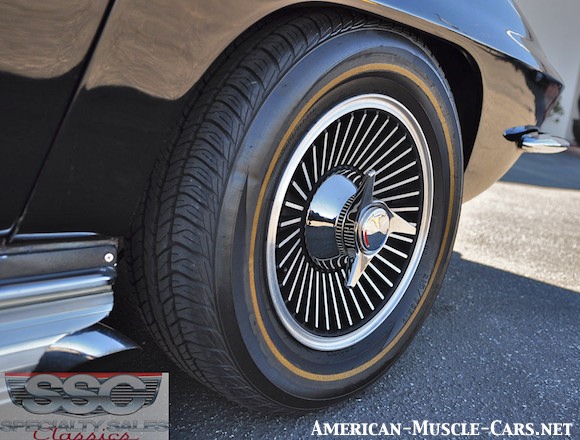













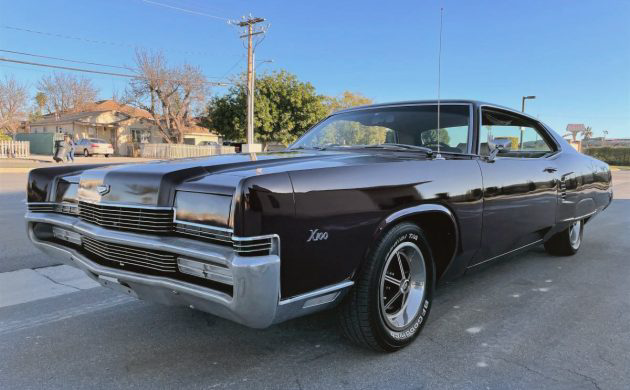
Mercury made the Marauder beginning in 1963 and then they went away for a while after the 1965 model year. They came back as a second-generation Marauder in 1969 for just two years, ending in 1970. It was during this short two-year period of time when the X-100 was made. Muscle cars at the time were more about power than posh but Mercury executives thought there could be room for a luxury car with the power chops to match. The Marauder came back for the 2003 and 2004 model years with another winner, albeit a four-door sedan so quite different looking, but a future collectible without question.

There’s the view. That rear 3/4 angle is the money shot with the Marauder X-100. The flat black rear is more often than not seen on these cars but it wasn’t on all of them – it was standard but could be deleted. I love it and would have to have that feature if (when) I own one. The rear wheel skirts were standard on the X-100 and optional on the standard Marauder, but some owners took them off.
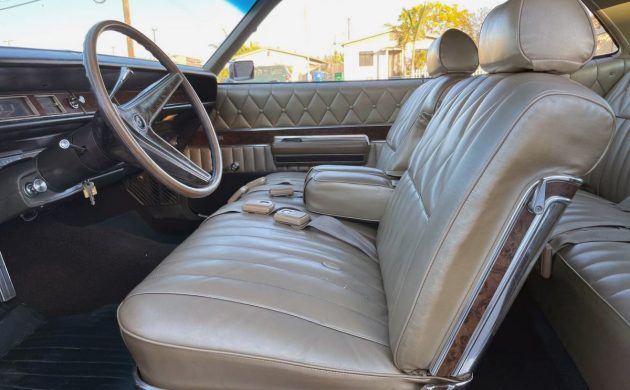
As expected, a beautiful, luxurious interior was standard and this car looks almost like new inside and out. The interior appears to be in amazing condition other than what appears to be a single crack in the padded dash top. The seller says that this car has 80,000 miles on it and it looks about as nice as I can imagine a 52-year-old car being. The trunk isn’t quite as finished as I would have expected but it would be easy enough to remedy that if a person cared at all about such a thing.

Just over 5,600 Mercury Marauder X-100s were made for 1969 and they all came standard with a 429 cubic-inch V8 and a four-barrel which put out 360 horsepower and 480 lb-ft of torque. Yes, it will burn through a set of rear tires quicker than normal if a person wanted to do that. This looks like an incredibly nice example of a fairly rare car to see today. Have any of you owned a Marauder X-100?
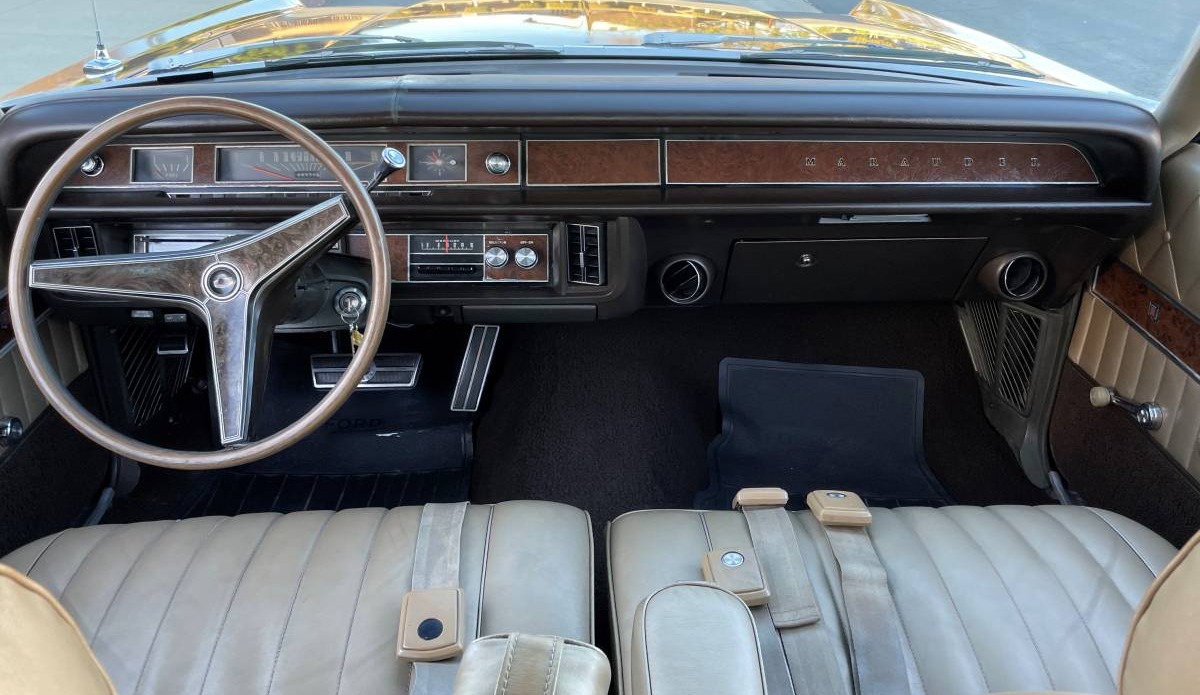

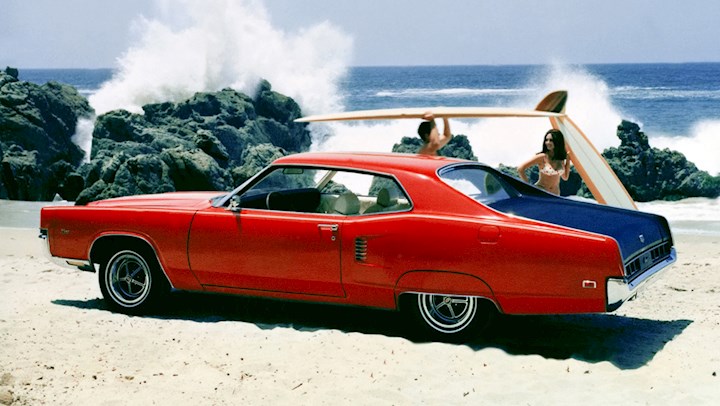

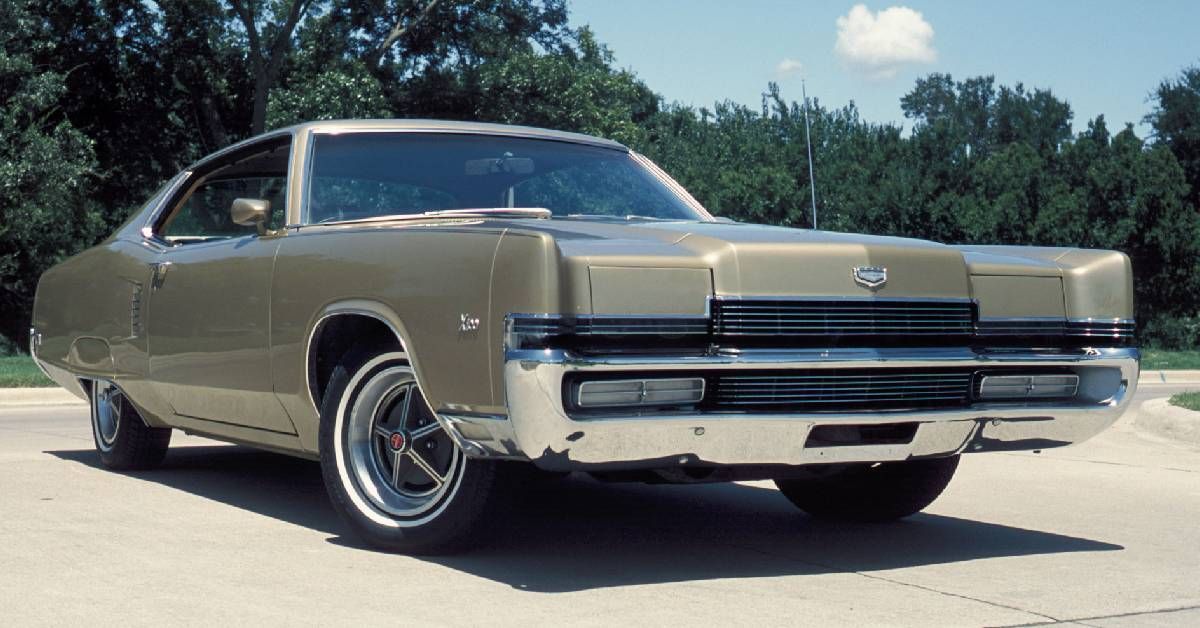
Sinners Rat Rod, showcased at the 2021 SEMA Show, has truly pushed the boundaries of custom car design. This remarkable creation takes a 1930 Ford Model A and transforms it into a unique masterpiece with half tracks at the rear and a powerful 5.9 Cummins diesel engine.

The first thing that catches your eye is the intentionally rusty appearance. Although it may seem like this Ford is falling apart, it’s actually the result of meticulous craftsmanship. The car features extensive custom metal work, a chopped roof, drilled-out sections, and distinctive bullet-shaped bolts, even securing the steering wheel in place.

To preserve the rustic charm, the bare metal bodywork is coated with a clear protective layer. However, a subtle rust-flavored paint job is also evident, adding to its overall aesthetic. The graphics adorning the car, such as the German cross, skulls on the doors, and the Ouija board theme at the back with Baphomet, the goat of madness, embody the spirit of a classic rat rod. After all, a rat rod isn’t complete without a touch of the satanic!
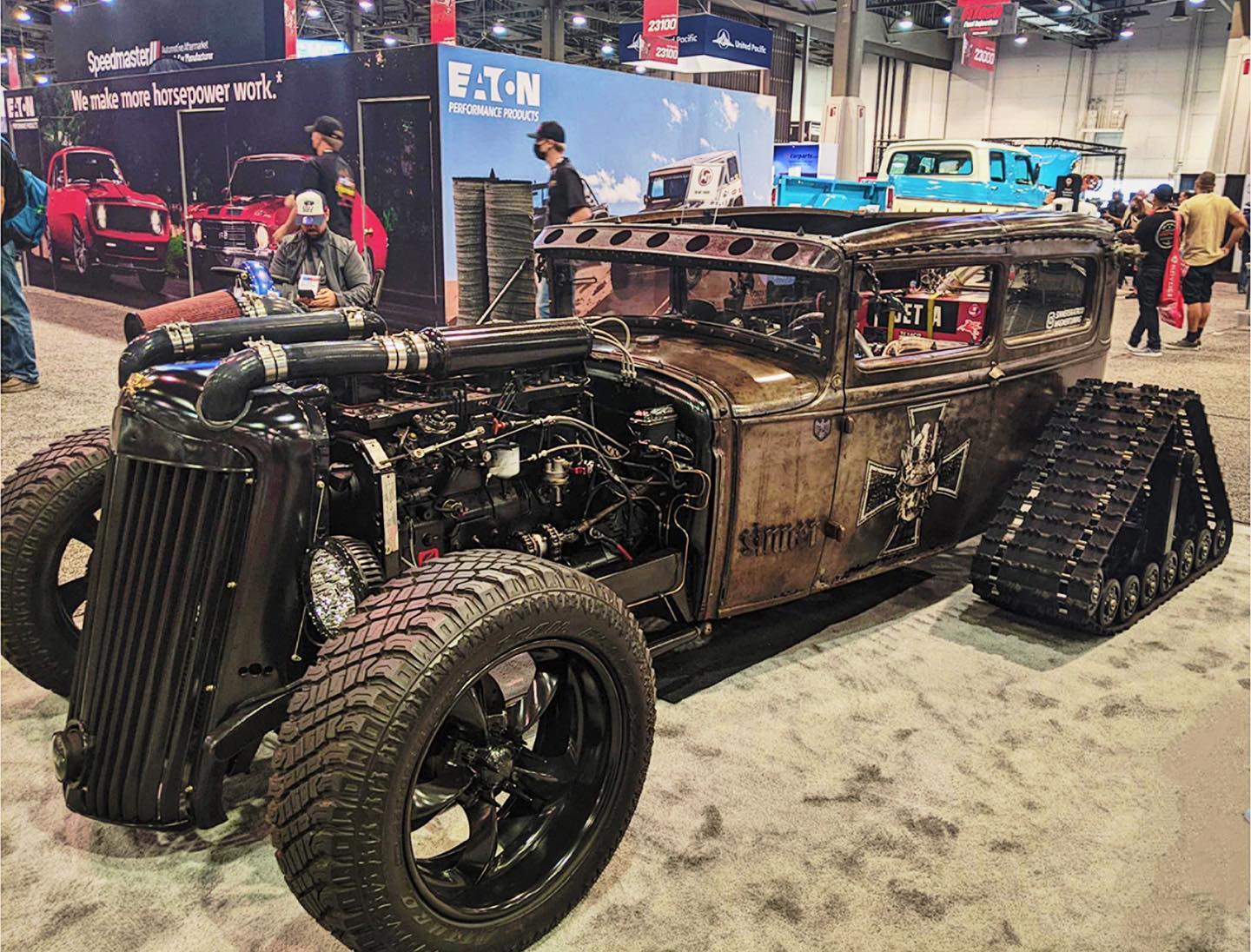
While the attention is often drawn to the half-track setup at the rear, it’s easy to overlook what lies beneath the front exterior. Concealed behind an old truck grille is a massive 5.9-liter Cummins turbocharged diesel engine, fitted with custom piping. The concept of “rolling coal” aligns perfectly with the devilish theme, adding an extra touch of infernal atmosphere.
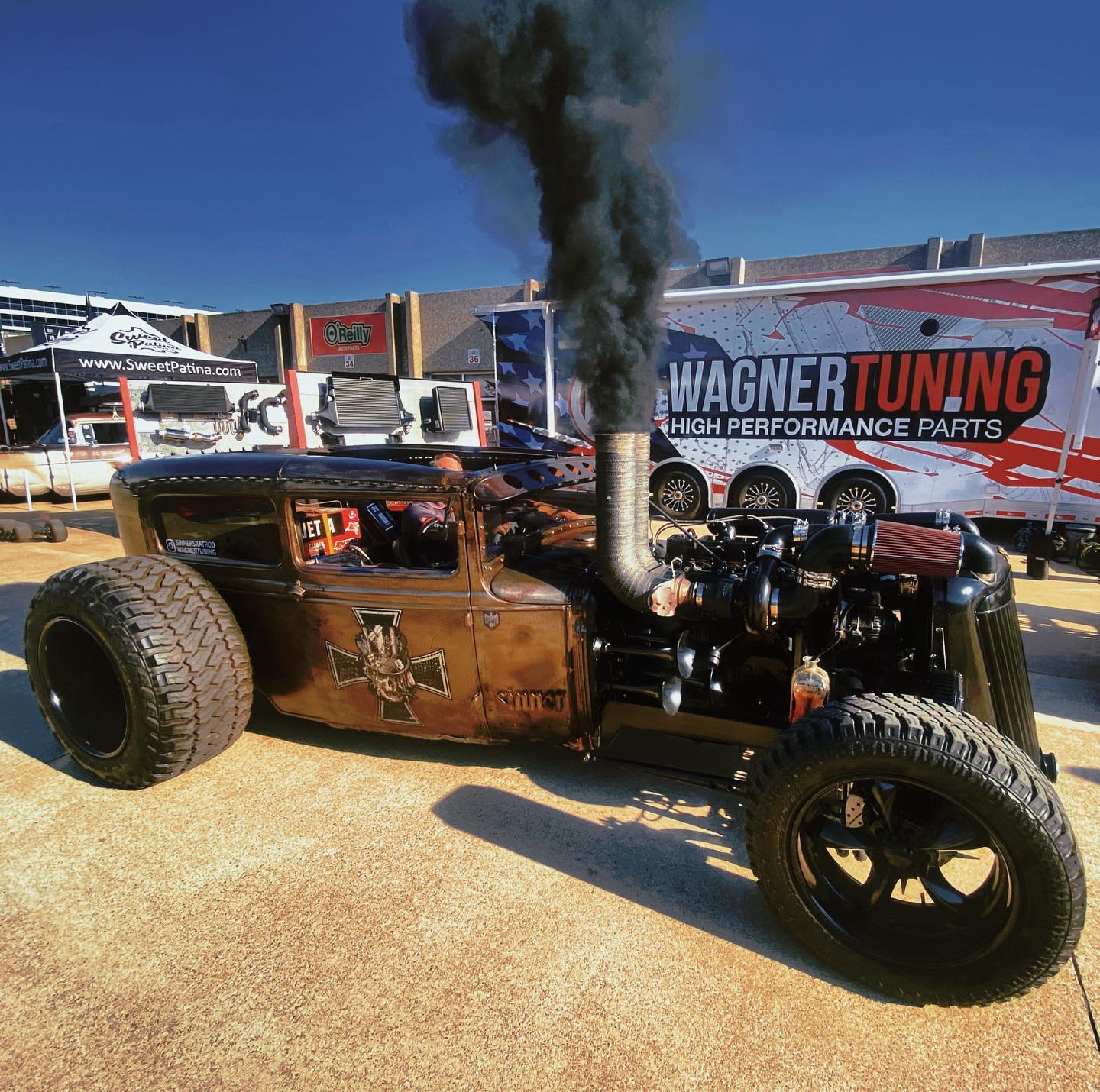
A glimpse into the interior, as shown in ScottieDTV’s spotlight video at SEMA, reveals a cabin straight out of the Mad Max universe. The gear stick is a shotgun, and a giant fuel cell shares the space with the driver. Safety may not be the top priority in this creation, but it undeniably makes a bold statement about the builder’s vision and creativity.
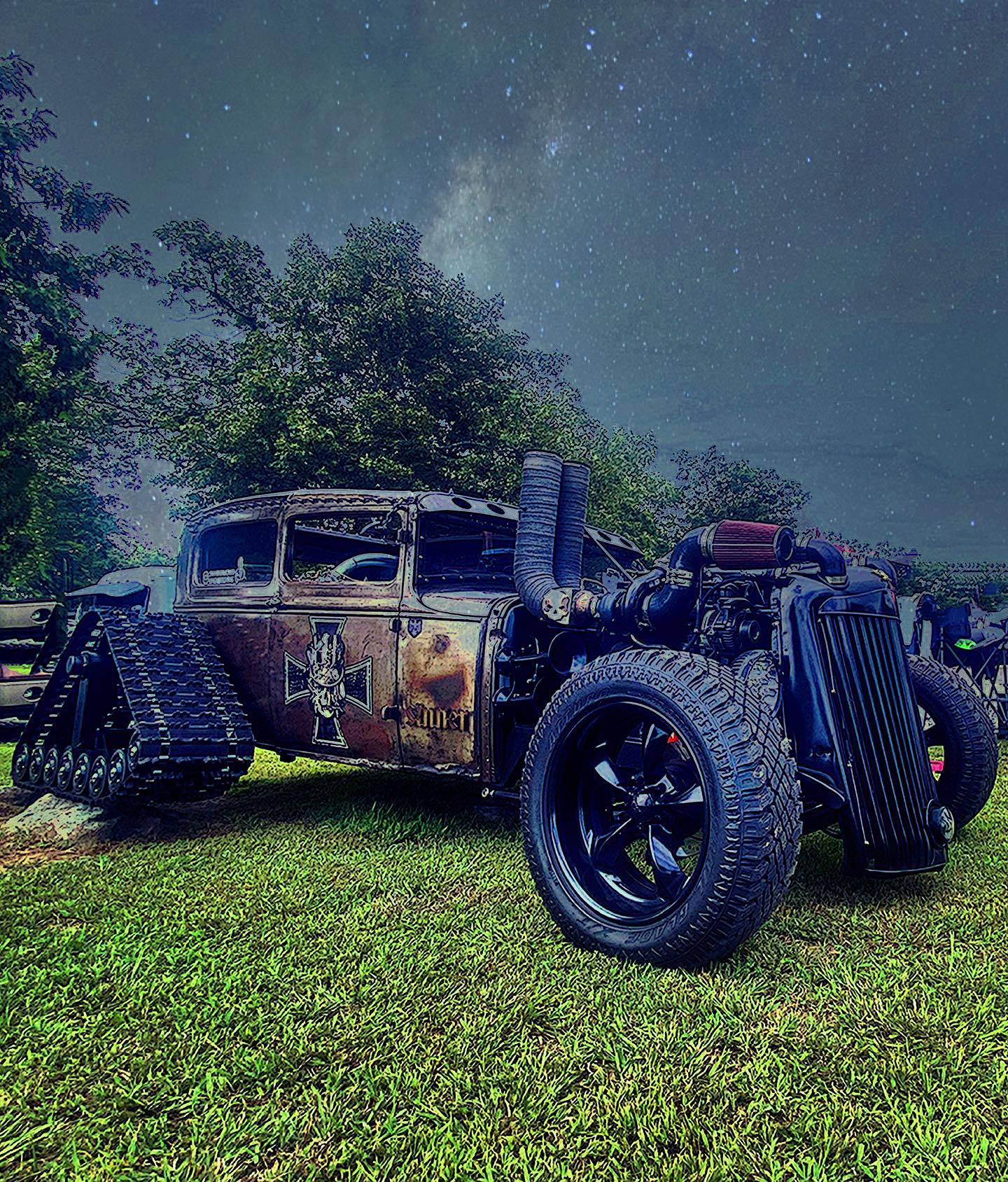
However, it’s important to note that this extraordinary vehicle isn’t meant for everyday driving. Track swaps became a popular trend in the custom car world a few years ago, with enthusiasts upgrading their trucks. Westen Champlin and even Ken Block, with his Subaru WRX, experimented with similar setups. These half-track systems are designed to fit on a drive axle, but there are limitations on their speed capabilities. Pushing beyond those limits would inevitably result in the tracks falling apart.
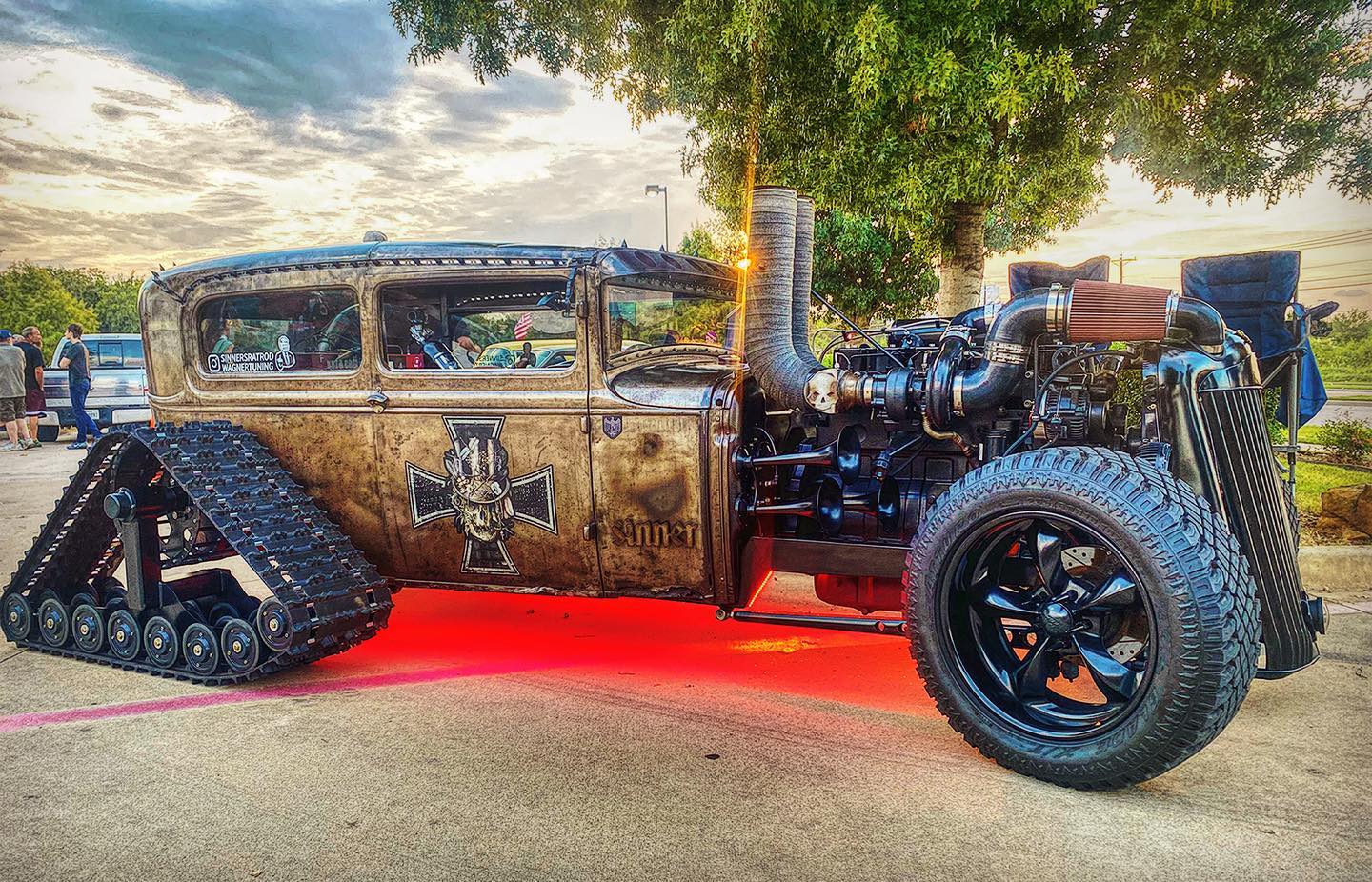
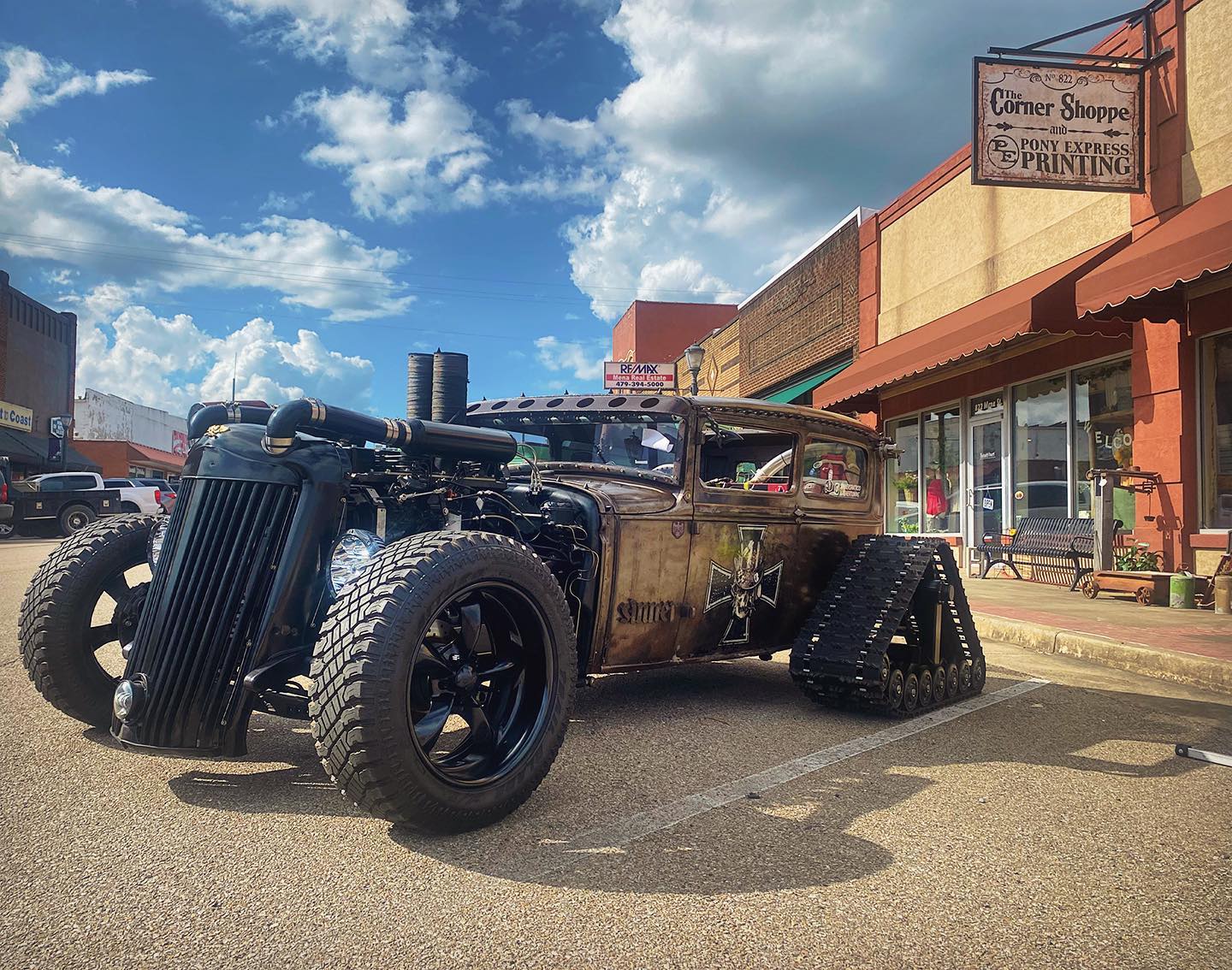
Sinners Rat Rod has shattered the conventional norms of custom car design with its 1930 Ford Model A. It embodies the rebellious spirit of rat rods by combining unconventional elements such as half tracks, a powerful diesel engine, and a striking visual aesthetic. This truly one-of-a-kind creation showcases the builder’s daring imagination and stands as a testament to the limitless possibilities within the custom car community.
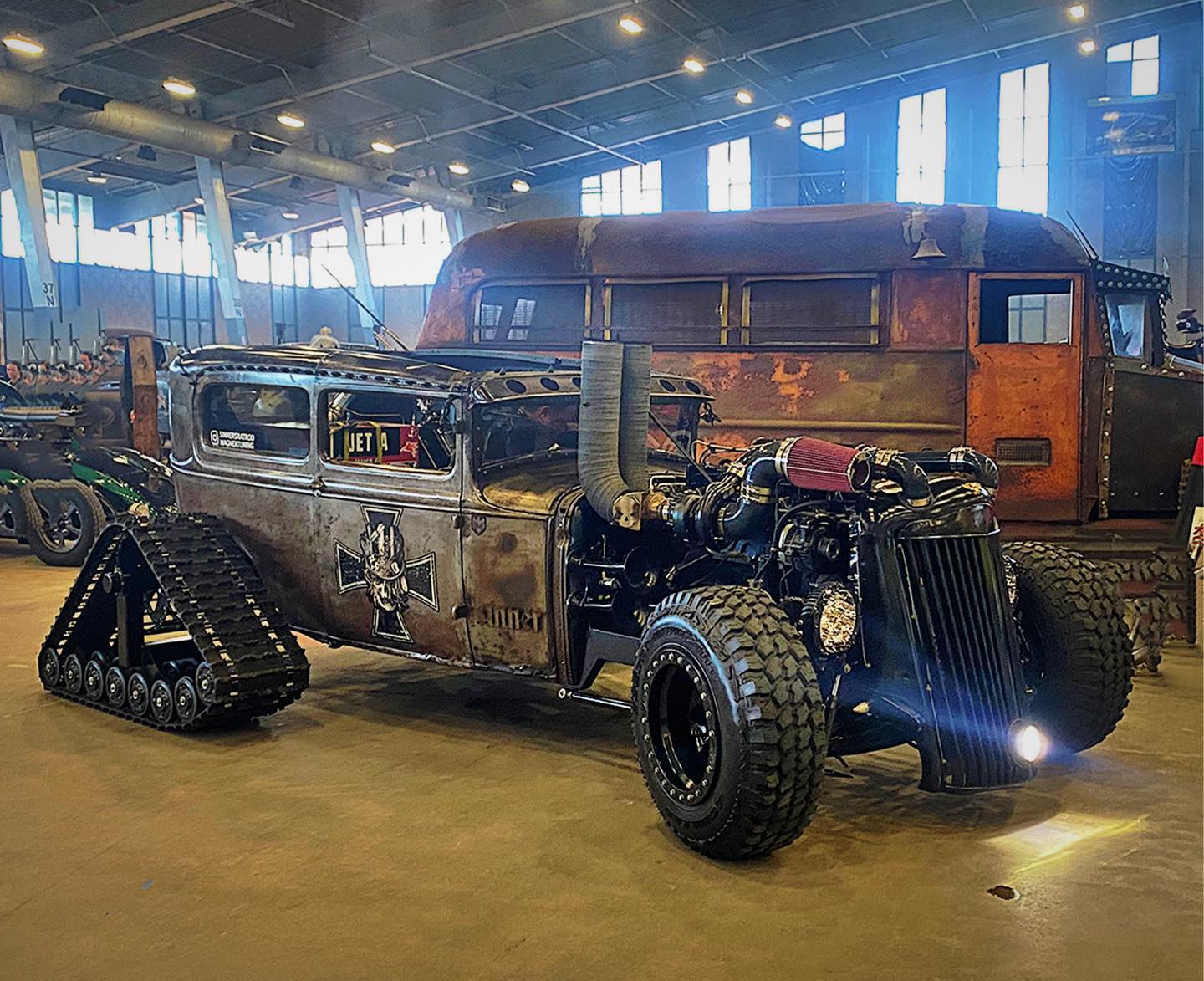
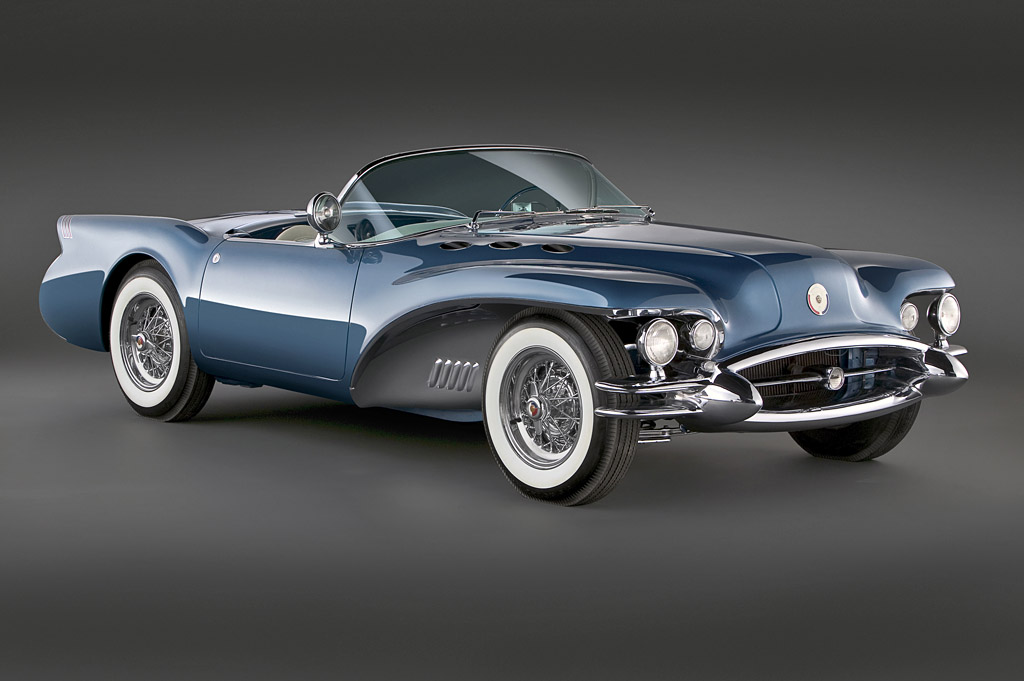
GM’s interest in developing small, powerful cars with lightweight fiberglass bodies resulted in the creation of the Chevrolet Corvette and Buick Wildcat in 1953, but something very different by the next year.

The 1954 Buick Wildcat II had very little in common with the original Buick Wildcat of 1953.

Originally billed as an “American Adventure in Tomorrow’s Design,” the newer Wildcat featured just as many “retro” styling cues as progressive details.

The “flying wing” front fenders and biplane bumpers had the look of a 1930s speedster. Freestanding headlights and chrome spoke wheels provided nostalgia as well.
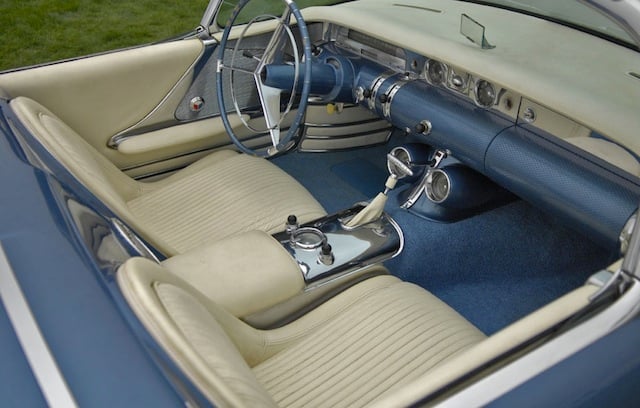
Many concept cars are simply rolling hulks and were never given power trains as they were only designed for auto shows.

This Wildcat II was specifically made “runnable” in case GM chief Harlow Curtis decided to have one built for his personal use. The car is powered by a 220 horsepower 322 cubic inch V-8.

The 1967 Dodge Coronet R/T was a true powerhouse, both in terms of performance and style. With its bold and muscular design, this car was built for speed and ready to take on the drag strip. In this article, we’ll take a closer look at this classic automobile, from its standout features to its enduring legacy.
Dodge marketed the Coronet R/T as a midsize car – the overall feel of the vehicle was light and agile. This was due in part to its relatively light weight (around 3,500 pounds) and its advanced suspension system. The R/T featured heavy-duty shocks and torsion bars, as well as a sway bar in the rear, all of which helped to provide a smooth and stable ride even at high speeds.
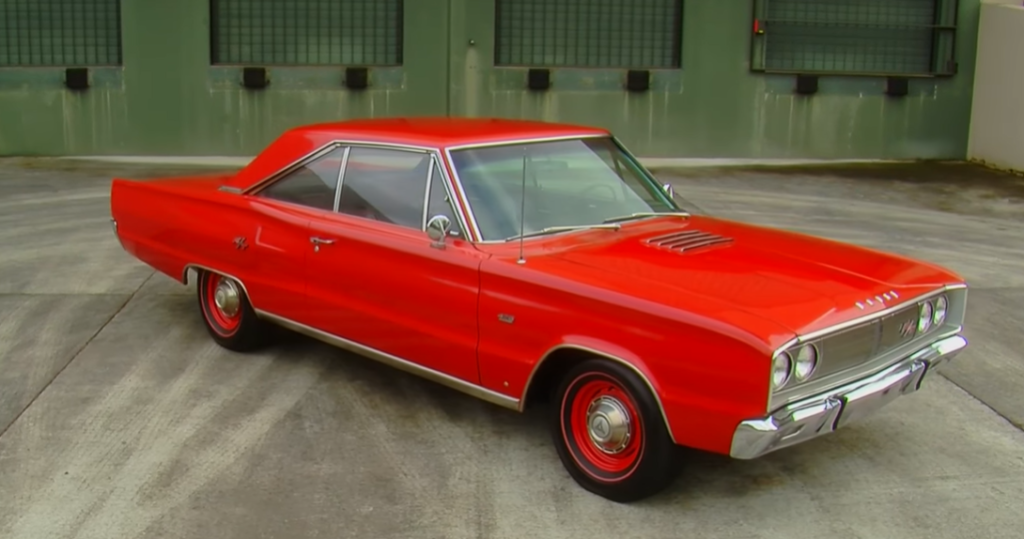
Dodge was lagging behind in the high performance streetcar sales, and the 1967 Coronet RT was intended to attract speed craze buyers away from the 400 Cube GTO’s and the SS396 Chevelles. The problem was that the base Coronet was deemed to be too much like a regular passenger car, and the 426 Hemi version was far too much of A race car for the street.
One of the most noteworthy aspects of the ’67 Coronet R/T was its optional 426 Hemi V8 engine.
Dodge actually called this car the hottest thing since the cast iron stove and while it normally came with a 440 hours rumbles with the optional 426 Hemi, a 425 horsepower breathing in through dual 4 barrels and breathing out of free flowing dual exhaust, A4 speed manual was standard or you could spring for the three speed automatic as seen in this car and a heavy duty rear axle took the abuse up back.
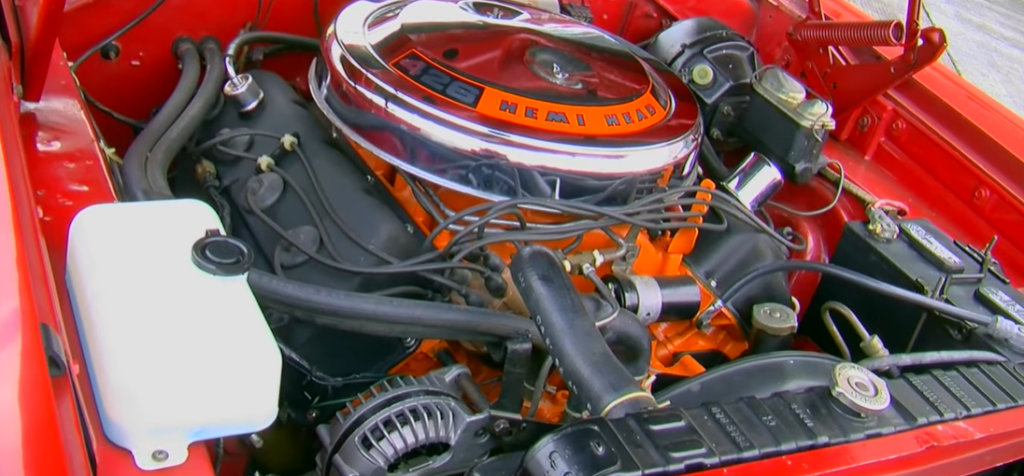
With a whopping 425 horsepower and 490 lb-ft of torque, this engine was capable of propelling the Coronet R/T from 0 to 60 mph in just over 5 seconds. That kind of speed was practically unheard of at the time, and it cemented the Coronet R/T’s reputation as a true muscle car.
More interesting is that it’s driven by a pretty young blonde girl who’s also seen shooting us with finger guns in the lower corner of the ad. Most women in 1960s car ads were shown driving base level economy cars or as passengers.
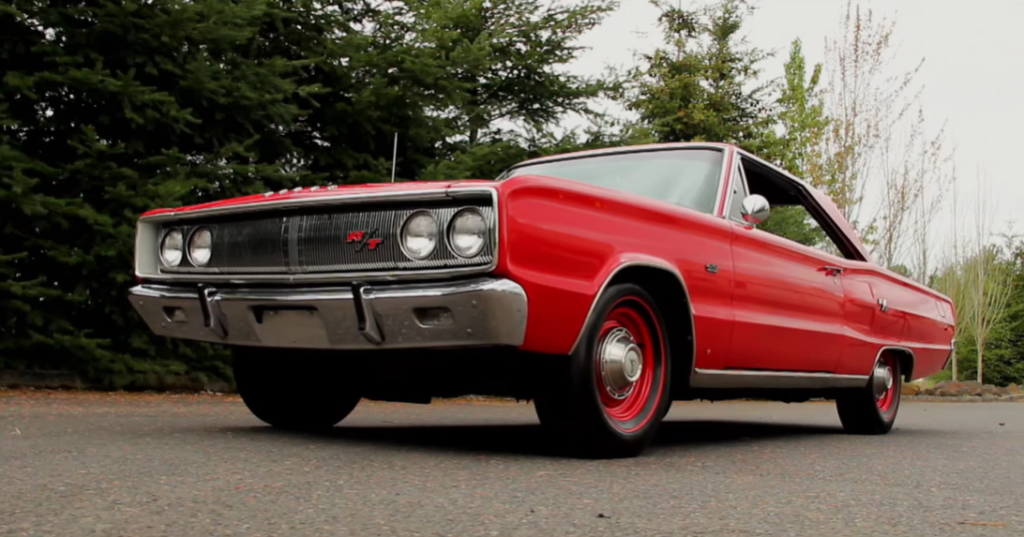
Dodge only sold 160 Two 1967 Hemi Coronet R T’s With the automatic transmission they sold 121. There were four speeds. Which one would you choose? Automatic or do you like to shift your own gears?

In 1957, Chevrolet enlarged their V8 engine to 283 in³ engine that was rated at 220 bhp. Several options were available to increase power output including the ‘fuelie’ that increased power to 250 or 283 bhp and GM boasted “one horsepower for every cubic inch”.
Mid way thought the production year Chevrolet offered a manual transmission for the first time on the Corvette and this option would continue in following years. It cost $188.30 and was a modified Borg-Warner unit.

For serious customers Chevrolet offered Rochester carburetor division’s “Ramjet” fuel injection which was only ordered on 240 cars. The basic kit could produce 283 bhp or 250 bhp and cost $484.20.

With column-mounted tachometer, cold-air induction and heater delete the 579E racing version cost $726.30 Less than 50 were ordered this way and they were typically ordered with the Heavy Duty Racing Suspension that had new springs, front anti-roll bar, limited-slip differential, ceramic-metallic brake linings and a faster steering ratio. These two options together added $1500 to the base price of the car.

Colors for the 1957 model year included Onyx Black, Aztec Copper, Cascade Green, Arctic Blue, Venetian Red, Polo White, Inca Silver with beige or red interior. A matching Auxiliary Hardtop could be ordered for $215.20.
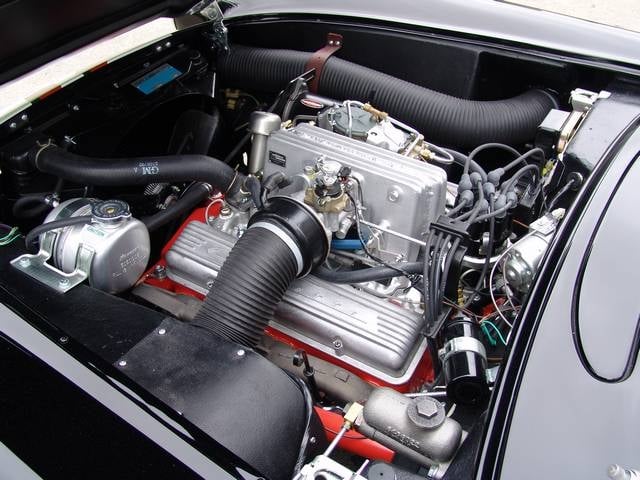
Often the 1957 Corvette raced alongside in SCCA races against the Jaguar XK120 and Mercedes 300SL. Active racer Andy Portofield said “You also had to drive very hard back then but the 1957 Corvette with fuel injection and the four speed transmission made us dominant from 1957 until the Cobra showed up in late 1962.”1 Roger Penske also raced a 1957 Corvette in 1958 as his foray into the world of motor sport.
